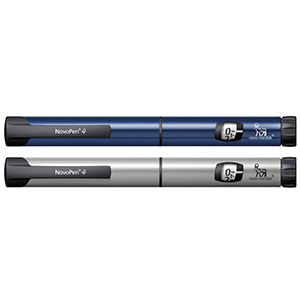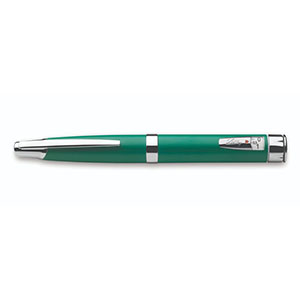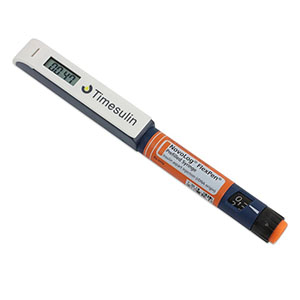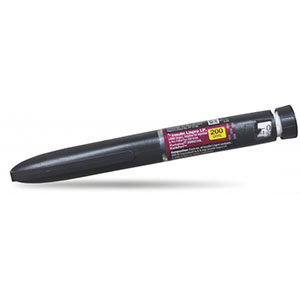An insulin pen is a compact medical device that enables people with diabetes to free themselves from the discomfort and inconvenience of the disposable syringe.
The insulin pen delivers carefully measured doses of insulin in seconds. There is no need to fumble with syringes and vials, no need to wonder if you have given yourself too much or too little insulin, and no need to draw unwanted attention when you are out and about.
The number of companies that produce insulin pens is relatively small, yet between them, they produce dozens of different models. We spent long hours researching each and determined that the following are the best insulin pens of 2023.
Rankings
1. Owen Mumford Autopen

The Owen Mumford Autopen earns top billing for its combination of quality and versatility. Whereas the vast majority of insulin pens are purpose-built to deliver only the manufacturer’s brand of insulin, the Autopen enables you to use three different brands.
What we like: The Autopen is one of the few that enables you to use different types of insulin. It will accept cartridges from Eli Lilly, Sanofi Aventis, and Wockhardt. It is also compatible with all major brands of needles.
Flaws: It is incredibly versatile but looks like a magic marker.
2. Humapen Memoir

The Humapen Memoir stores relevant info on recent injections. This can be a huge help for older folks whose memory is perhaps not what it used to be. Or, for that matter, for anyone who wants to keep track of what they are taking.
What we like: The Memoir looks like an expensive writing instrument, which makes it great to use at work or when you are out and about. But the real selling point here is that it records the details of your last 16 injections.
Flaws: We’re being greedy, yes, but we would like to see a record of the last 40 or 50 injections to get a better idea about long term trends.
3. Humalog U-100 Kwikpen

The U-100 Kwikpen is compact and light and extremely easy to use. This is a prefilled pen designed for young people with Type I diabetes. But it will serve any Type I diabetic equally well.
What we like: We love how light and easy this pen is to use. The U-100 is designed for kids but great for adults with Type I diabetes as well. It is prefilled with 30 units of insulin, and the dosage can be adjusted in 1/2 unit increments.
Flaws: Humalog KwikPens are some of the most expensive on the market.
4. Novo Nordisk NovoPen 4

The NovoPen 4 makes insulin delivery simple, fast, and painless. The replaceable cartridges each hold 60 units of insulin, and the pen does not need to be refrigerated after opening.
What we like: The dose countdown is a nice touch, as is the click when the dose is fully administered. Each replaceable Penfill cartridge holds 60 units of insulin. The device also keeps track of what is left and will not indicate a dose larger than what is available.
Flaws: The Novo Pen has a bulky, utilitarian feel to it.
5. HumaPen Luxura HD

For those who are uncomfortable with the idea of pulling out syringes at work or during business conferences, the HumaPen Luxura HD is here to help. The unit is extremely handsome and enables you to receive a precise dose quickly and oh-so discreetly.
What we like: The Humalog Luxura HD is a very sharp looking device that could easily be mistaken for a Cross pen. But besides looking great, it is also refillable and allows for precise dosage control in half unit increments.
Flaws: If you are out of Humalog 3mm cartridges, you are out of luck.
6. Novo Nordisk NovoPen Echo

The Novo Nordisk Echo is the company’s premier insulin delivery vector for children and adolescents. It not only enables precise dosage control but saves a record of each dose so you can monitor your child’s insulin intake.
What we like: The new Echo retains the kid-friendly utility of its predecessor, the Junior, while allowing adjustments in 1/2 unit increments. That’s great for kids whose smaller bodies require more precise control.
Flaws: The company has done a pretty poor job getting the word out that this is the replacement for their popular ‘Junior’ device.
7. Lantus Solostar

The Lantus Solostar is one of the larger insulin pens on the market. Yet it never feels bulky or awkward in your hand. It is easy to use, comfortable, allows for individual doses of up to 80 units, and is less expensive than some of its competitors.
What we like: The dosing window is large and easy to read. The pen is comfortable to hold during administration. It is very easy to set an accurate dose with the Solostar. The push-button injection is simple and convenient.
Flaws: Over the past decade, the company has trimmed its number of insulin pen offerings and seems to be moving in other directions.
8. Novo Nordisk FlexPen

The Novo Nordisk FlexPen is a prefilled insulin pen that puts a premium on comfortable delivery. It delivers the company’s fast-acting insulin quickly and with less force than competitors like the KwikPen.
What we like: We love how easy it is to administer a dose. You do not have to have an iron grip, which is a big plus for seniors. And the dosing scale resets after every use to head off dosing errors down the road.
Flaws: The 1-unit incremental adjustment is not as precise as some others.
9. Novo Nordisk Tresiba Flextouch

The Tresiba Flextouch is another low force insulin pen designed to optimize user comfort while ensuring accuracy. It is designed to showcase the company’s long-lasting Tresiba insulin product, but the real highlight here is the pen itself.
What we like: The Tresiba Flextouch is super easy to use. We love the audible ‘click’ when the dose is fully administered. It is also very easy to get a nice firm grip on this pen. Finally, Tresiba insulin lasts for eight weeks after being opened.
Flaws: Most of the reported downside is related to Tresiba itself, not the Flextouch pen.
10. Humalog U-200 KwikPen

The Humalog U-200 from Eli Lilly has a well-deserved reputation for safety, accuracy, and dependability and does not need to be refrigerated after opening, which makes it a good travel companion.
What we like: The U-200 holds 600 units of Humalog insulin. Each dose can be adjusted up or down in 1 unit increments via the handy dial mechanism. The device is also discrete and easy to use.
Flaws: If you require a dose of more than 60 units, you will need to do a second injection.
Who Needs An Insulin Pen?
In the nearly 100 years since the discovery of insulin (1) and the development of the first related therapies, insulin has saved and transformed millions of lives for the better worldwide. But insulin therapy is not without its downsides, with the needle-based delivery system being among the biggest. Drawing insulin from a vial with a disposable needle and then injecting oneself with that needle is an imprecise and, for many people, difficult process to go through. The fact that it may be necessary 3 or 4 times every day just drives home the negative aspects of the therapy.
Enter the insulin pen. An insulin pen can take much of the guesswork out of the dosing process and provide a safer, less painful way of delivering insulin. Insulin pens often come with premeasured doses in place ready to be dispensed. There is no more straining to watch the tiny lines on the needle, trying to determine if you have the right amount. Insulin pens also cut down on waste, which is important since insulin is not cheap. And many insulin pens have push-button delivery that simplifies the entire process.
How We Ranked
Insulin pens are a rapidly developing technology. Every year brings advances in accuracy and dependability. And every year, digital technology becomes a more important aspect of design. Because insulin pens play such an important role in determining the effectiveness of insulin therapy, it’s necessary to regard them from every angle.
To that end, we considered a range of biomedical factors when ranking for our list, including dosing accuracy, adjustability, size of incremental increases offered, length of the needles, and much more. We also considered whether the device was prefilled or refillable, the comfort level of the device, whether it was kid-friendly and whether the device was ambidextrous.
An insulin pen should enhance the daily experience of the user. So, to that end, it should be both attractive and discrete, as well as being compact and easy to transport. And since this is the 21st century, we give extra points to manufacturers who find useful ways to integrate digital technology, such as being able to view your recent dosing history.
FAQs
Q: What is an insulin pen?
A: An insulin pen is a medical device that makes the administration of insulin therapy much easier and more reliable. Most insulin pens are disposable and look like ordinary writing pens. As such, they will not attract the same kind of attention in public that syringes do. And many diabetics appreciate that fact. In many cases, insulin pens are a good choice for children or the elderly or people with vision problems that make syringes impractical.
Q: How does an insulin pen work?
A: An insulin pen has a fixed or replaceable cartridge full of insulin and is programmed to dispense that insulin in precise amounts. Some pens will allow you to adjust the amount, some will not. The needle on an insulin pen is typically very thin and quite short and needs to be replaced after every injection. Keep in mind too that a prefilled insulin pen will only last 28 – 42 days before it must be discarded.
Q: What are some advantages of insulin pens?
A: Most people report that insulin pens hurt less than traditional disposable syringes. Also, dosing with the pen tends to be much more precise, so you are neither overmedicating or under medicating yourself (2). In addition, they are easy to take when you travel, and they are often easier for kids and seniors to use than syringes. Finally, some ‘smart’ pens will store a record of recent injections so you can track how much you are using.
Q: What are some disadvantages of insulin pens?
A: While insulin pens are widely considered to be safe, convenient, and effective, there are still a few potential disadvantages that need to be considered. For one, they require a bigger upfront investment than disposable syringes. However, in the long run, the per injection cost may wind up being lower. Also, most are designed to work with only one type of insulin, insurance will not always cover pens, and you still have to dispose of the needles.
Q: Can I buy an insulin pen online?
A: Insulin pens require a prescription. Because of this, the vast majority of online retailers, including giants like Amazon, do not sell the pens themselves, only insulin pen accessories. In the UK and Canada, you can purchase insulin pens online. But in the US, you will need to take your prescription to a pharmacy and have it filled there.
Q: Should I get a refillable or prefilled insulin pen?
A: Prefilled pens have a sealed compartment built into them that holds a set amount of insulin. Once that insulin is used up (or expires), the pen is disposed of. Other insulin pens allow you to replace the cartridge. And a few will allow for the cartridge to be refilled from a vial. Which one you choose will most be a matter of personal preference. But if you are having trouble deciding, it may be wise to start with the prefilled, disposable type and go from there.
Q: Can I share my insulin pen with a friend?
A: Absolutely not (3). Insulin pens should never be shared with anyone. Sharing needles of any kind puts you at risk of contracting hepatitis (4) or HIV (5). Bacterial infection is another strong possibility when needles are shared. Even if you change the needle on the insulin pen before sharing, it is still not safe. Why? Because pathogens can travel up the needle into the insulin, contaminating it. A new needle will simply spread the contaminated insulin.
Q: Are insulin pens more accurate than traditional needles?
A: Most insulin pens come with premeasured amounts of insulin in fixed or replaceable cartridges. They then dispense that insulin in tightly controlled amounts. In some, there is a wheel-like mechanism that enables you to adjust the dose with a high degree of precision. The bottom line is that insulin pens tend to be much more accurate and reliable than drawing insulin from a vial into a disposable needle.
Q: Do I need a prescription to purchase an insulin pen?
A: Yes, you will need a prescription from your doctor to purchase an insulin pen. Insulin pens are considered Class II medical devices by the FDA (6) and are subject to a range of controls that do not apply to, say, a thermometer. As such, most reputable online retailers will not carry them (although they may carry accessories such as replacement needles). Once you have a prescription, you can obtain your insulin pen from most any pharmacy.
Q: Can kids use insulin pens?
A: They can, and they are often encouraged to because the pen provides a highly accurate dose. With the dose sequestered inside the pen, there is also less chance the child will lose their insulin or lose their needles. Some manufacturers produce insulin pens designed specifically for youngsters. The Novo Nordisk NovoPen Echo is one such example.
Q: Are insulin pens expensive?
A: To a certain degree it depends on where you live. But as a general rule, a box of five prefilled insulin pens will run anywhere from about $150 – $600+. How much of that cost you pay will depend on the type of insurance you have. Some policies will cover the entire cost. But it is more likely there will be a copay involved. Even with the copay you may find the pen more cost-effective than buying disposable needles.
Q: Will Medicare cover an insulin pen?
A: Unfortunately, neither Medicare Part B or Medicare Part D (prescription drug coverage) will not cover the cost of an insulin pen (7). Medicare considers the insulin pen to be a luxury. An opinion not shared by many people whose insulin pen has enabled them to finally get their diabetes under control.
Q: Will an insulin pen work with any type of insulin?
A: Most insulin pens work with specific insulin products. In some cases, this means the pen has a prefilled cartridge. When the cartridge is empty, you dispose of the whole pen. Other pens allow you to replace empty cartridges with new, matching cartridges, or allow you to refill the cartridge from a vial, but only with the same brand of insulin. The Owen Mumford Autopen is one of the few that accept cartridges from more than one company.
Q: How do I store an insulin pen?
A: If the pen is unopened, you should store it in the refrigerator until it is time to use it. If you have used the pen, the first thing is to make sure you remove the needle and dispose of it. Once the needle is disposed of and the cap is secured, you may not need to put the pen back in the refrigerator. Follow the storage directions on the package. Any pens that were frozen or stored about 85 degrees Fahrenheit should be disposed of.
Q: Can I take an insulin pen on an airplane?
A: The Transportation Safety Administration (TSA) allows you to carry your insulin and related supplies (needles, insulin pen, etc.) in both checked and carry-on baggage (8). However, you will need to inform the TSA agent that you have insulin and insulin supplies with you. If you do not and they discover them, you could be in for a lengthy delay as your bag is opened and you are asked to explain everything.
Q: What is the best place to inject insulin?
A: Recommended locations include the upper arm, stomach, buttocks and hips. Ultimately, it will be up to you. But it is recommended that you mix up the injection points to some degree. Injecting into the same area continuously can cause thickening of the skin, swelling, and lumps.
Q: Am I better off with an insulin pump?
A: That is something you will need to determine after discussion with your doctor. An insulin pump is often considered a fairly extreme measure, and tends to be reserved for extreme cases. The pump delivers insulin to the system 24 hours a day, 7 days a week. Since most diabetics only need a shot or two per day (9) – sometimes three or four – there is no pressing need for an insulin pump.
Q: Do insulin pens have an expiration date?
A: The pen itself does not, but insulin inside the pen does have an expiration date. Therefore, if a pen comes with a prefilled insulin cartridge that cannot be refilled, the entire pen will need to be disposed of once that insulin has reached its expiration date (10). For refillable insulin pens, keep track of the expiration date of the insulin itself. Do not use replacement cartridges that have expired, or refill the pen’s cartridge with expired insulin from a vial.
Q: Do I have to remove the insulin pen needle after every use?
A: Although it is not uncommon for people to try and reuse their insulin pen needles, the practice is strongly discouraged for several reasons. First, the chance of bacteria taking root on a used needle is strong. Beyond that, there is a small amount of degradation that occurs when a needle is used. This could cause any subsequent injections to be increasingly painful. Finally, the risk of developing lipohypertrophy (11) is very real.
Related Articles
Recap
An insulin pen enables those with diabetes to simplify their insulin treatment routine. It eliminates the need for toting around disposable syringes and vials of insulin, cuts the time it takes to administer a dose, and helps both seniors and children take better control of their diabetes.
Insulin pens are not exactly cheap, but few things that elevate a person’s quality of life are. And make no mistake, the insulin pen is capable of significantly enhancing a diabetic’s quality of life in practically every way that quality can be measured.
If you currently take insulin to control your diabetes Type I or II and are using the syringe and vial method of administration, it is in your interest to consider switching to an insulin pen. Not every diabetic will find them useful, but most will. Use the above information to determine which of today’s best insulin pens is right for you.
For cpoe.org’s #1 recommended insulin pen, click here.

